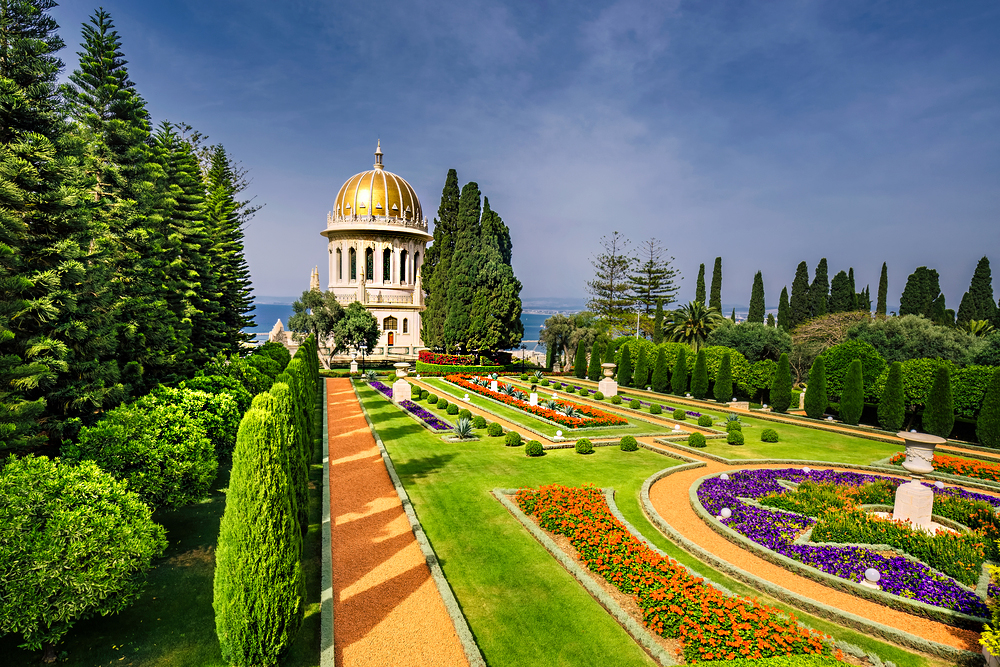Haifa stands today as the third-largest city in the State of Israel. Known by a copious number of other names throughout its 3,000-year history, the city’s reputation has grown tremendously in recent years as an industrialized giant and a cultural hub within the Holy Land. With a population of nearly 270,000, this bustling city is quite the endeavor for anyone willing to take the time to visit!
Early History of Haifa
Dating back to 14th century BCE, the area was originally comprised of a series of smaller settlements surrounding the domain of what is now considered to be Mount Carmel and Haifa. The small port city of Tell Abu Hawan was first established in the region and existed for hundreds of years until silt blocked the city’s port, forcing its inhabitants to move south to what is now Bat Galim. There are disputes over where the precise location of ancient Haifa is, due in part to many works of literature mentioning Haifa by various names in different locations.
It is important to note that the area is mentioned in the Bible, specifically the grotto on the top of Mount Carmel that is believed to be the Cave of Elijah. It was also mentioned in the Talmud around 3rd century CE as being home to many Jewish scholars. Since then, several civilizations have existed within the region including Canaanites, Israelites, Romans, Byzantines, Arabs, Crusaders, Kurds, Mamluks, and the Ottoman Turks.
Bahá’í World Centre

Located on Mount Carmel, the Centre is a structure dedicated to the Bahá’í faith and is Haifa’s main tourist attraction. Attracting upwards of 90,000 visitors a year, the Centre is home to multiple shrines dedicated to the Bahá’í founders. Listed as a UNESCO World Heritage Site in 2008, the Centre is the holiest site in the Bahá’í faith, attracting many followers to embark on pilgrimage to the Shrine of the Báb where the remains of the Báb, founder of the Bábí Faith and forerunner of Bahá’u’lláh in the Bahá’í faith, have been buried.
Along the slopes of Mount Carmel, a series of stunning gardens lay a beautiful framework leading up to the shrines. The Hanging Gardens housing the Shrine of the Báb are the most popular of the gardens. The 200,000 square meters of land are linked by a set of stairs with twin streams of water cascading down the mountainside. Another popular site to visit is the Monument Gardens, placed within the Arc Gardens, that is home to the tombs of some members of the Bahá’í holy family.
Haifa Today: 20th Century and Urban Developments
At the beginning of the 20th century, Haifa emerged as an industrial port city and growing population center with the establishment of the Hejaz railway and the Technion Institute of Technology. At the time, approximately 20,000 individuals inhabited the city, with 96% being Arab and 4% Jewish. As aliyah increased over the next few decades, the balance shifted with the population reaching 70, 910 Arabs and 74,230 Jews by 1947.
With steady development over the remainder of the 20th century into the 21st, Haifa today has an astounding population of 266,300 people comprised of about 90% Israeli-Jews. To accommodate the rise in population, serious urban developments and residential construction commenced, especially during the early 21st century. Today there are roughly 103,000 households within Haifa’s borders, with a new city plan underway to increase the overall population by 60,000 before 2025.
The Haifa Municipality is currently seeking to turn the city into Northern Israel’s tourist center from where travelers visiting the Holy Land can embark on day-trips to Acre, Nazareth, Tiberias, and the Galilee. A plan to redevelop the western section of the port into a cultural and nightlife center has been put in motion, along with 40 new hotel developments to accommodate the overflow of individuals visiting the city.
As plans for Haifa’s continued development expand, offering attractive and must-see stops along the way, it’s worth noting that the city has transformed from an industrial city to a bustling cultural hub, a city in Israel definitely worth visiting next time you’re in town.















